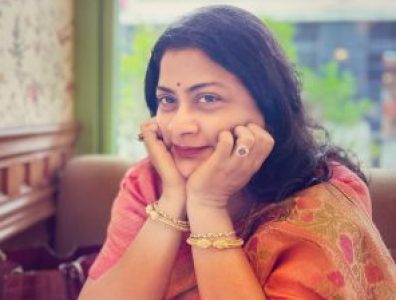A brief look at the political and socio-religious scenario that led up to the 16th century Hindu revivalism under Sri Chaityna With the start of the Muslim invasions from the end of the 12th century and the subsequent settling down of these invaders in Bengal marked a sharp breakaway from the past within the socio-cultural…
Tag: art
Photodocumenting Museum Sculptures I – Coochbehar Palace Museum (newly renovated)
All photos by Anirban Sarkar (if images are downloaded and shared, please give his name as reference) Surya, 10th c. CE Navagraha panel, 10th c. CE 4 armed Devi, 9th -10 c. CE Fragmentary remains of a likely Vishnu Stele, at the two sides are Devis Lakshmi and Saraswati, 11-12th c. CE remains of ornametal…
Taking a look at the Devi images on seals and other artefacts from the Harappan times to the Gupta era in Hindu Iconograpy
Hindu temple iconography is a difficult subject. It takes a lot of reading and understanding of the philosophies behind the symbolism to get at the basics. Then of course there are the varying interpretations of each symbolism as per the philosophy one tends to believe in. There’s a saying in Bengali : joto mot, toto…
Devi sakti and Durga in her two main forms: Katyayani and Mahishasuramardini
Listen, O Devi, I will speak concisely of the essence of yoga. The body resembles a tree, with the root above and the branches below. In the macrocosm there are tirthas (bathing places) which also exist in the body. The macrocosm is like the microcosm. ~ Todala Tantra, II Liberation comes from knowledge of self. ~ Kaula Upanishad Within…
The various Durga-Mahishasuramardini pratimas as seen through the ages – a pictorial depiction
The ugra aspect of the devi is best characterised by her Mahishasuramardini image, which has been depicted in various ways over the centuries. The Vedic text such as Vajasaneyi Samhita, Taittiriya Aryanaka, Kena, Mundaka Upanishads, Sankhayana grihasutras mention Durga in her various forms; the soumaya (quiet/placid) forms among them being that of Gauri, Parvati, etc….
Mudras and Postures seen in Indian Iconography
Studying the murtis created in the past helps in understanding a great deal of the social history of that times, and the local cultures from where the murtis originated. The dress, jewellery, weapons, etc., depicted on a murti is a direct reflection of what was in vogue among people living in that era. Varahamihira in…
Kesa-vinyas or Hairstyles in Indian art- a photo exhibition by the ASI (2015)
My two bits as Introduction Hair is an important aspect of a person as well as that of an image or a murti. It gives it an individuality and adds to the personality or character of that person or image. The Chitrasutra of Vishnudharmottara purana names six different types of hairstyles: Kuntala (loose flowing hair), Dakshinavarta (hair curled…
The Mother Goddesses
In all ancient cultures or primitive societies women formed to be the foundation pillars upon whom rested the important tasks of giving birth and rearing the young, while teaching them what were seen as social norms, culture-heritage, behavioral habits, and traditions of those times. The women were seen as life producers with regenerative capacities, hence…
Triloknath/Trilokinath temple in Mandi, Himachal Pradesh
Mandi district as we now see was formed by merging the two princely states of Mandi and Suket, when the State of Himachal Pradesh was created post independence (1948). The kings of Mandi and Suket are believed to be descendants of the mighty Sena dynasty of Bengal. After the Islamic invasion of Bengal in 1204…
Garuda – the vahana of Vishnu (Vishnu’s mount)
Vahanas (Mounts) Deities of the Hindu pantheon are known to always exist with their vahanas. Like the accessories in their hands (ayudhas), the vahanas are also peculiar to each deity and signifies that particular god. Vahanas are an essential part of iconography of the Indian sculptural genre, especially from the early medieval period, and is…
